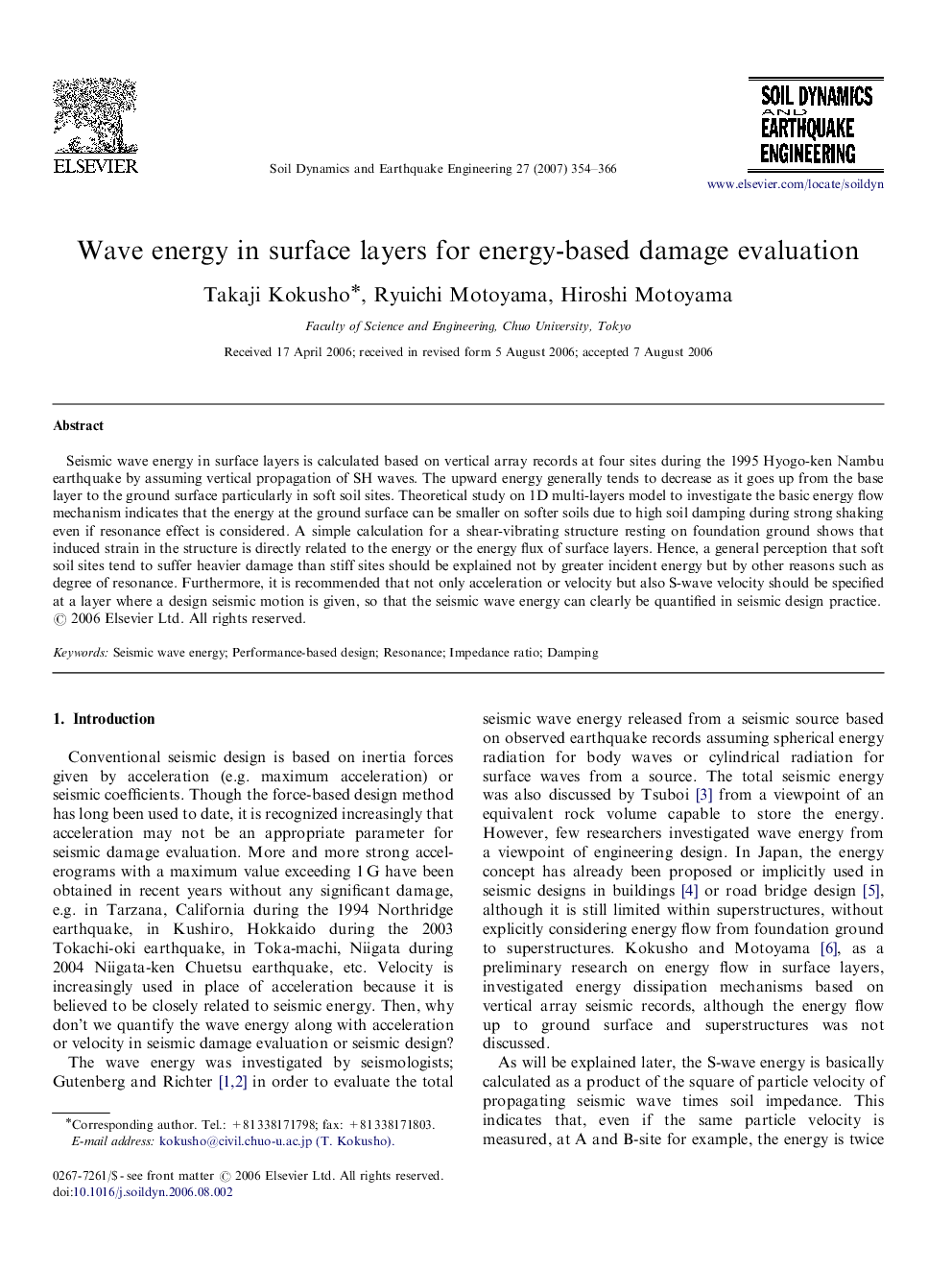| Article ID | Journal | Published Year | Pages | File Type |
|---|---|---|---|---|
| 305095 | Soil Dynamics and Earthquake Engineering | 2007 | 13 Pages |
Seismic wave energy in surface layers is calculated based on vertical array records at four sites during the 1995 Hyogo-ken Nambu earthquake by assuming vertical propagation of SH waves. The upward energy generally tends to decrease as it goes up from the base layer to the ground surface particularly in soft soil sites. Theoretical study on 1D multi-layers model to investigate the basic energy flow mechanism indicates that the energy at the ground surface can be smaller on softer soils due to high soil damping during strong shaking even if resonance effect is considered. A simple calculation for a shear-vibrating structure resting on foundation ground shows that induced strain in the structure is directly related to the energy or the energy flux of surface layers. Hence, a general perception that soft soil sites tend to suffer heavier damage than stiff sites should be explained not by greater incident energy but by other reasons such as degree of resonance. Furthermore, it is recommended that not only acceleration or velocity but also S-wave velocity should be specified at a layer where a design seismic motion is given, so that the seismic wave energy can clearly be quantified in seismic design practice.
